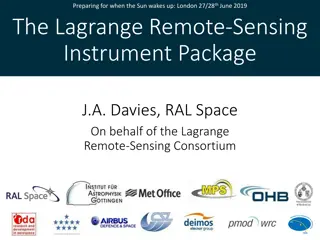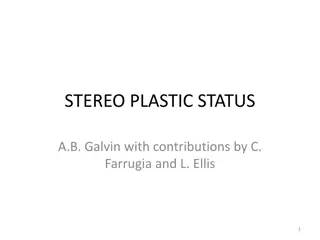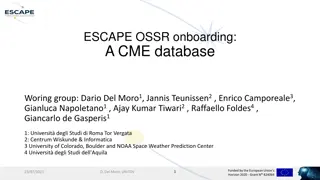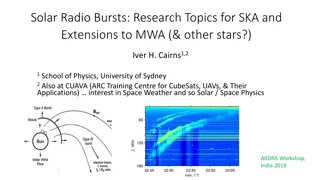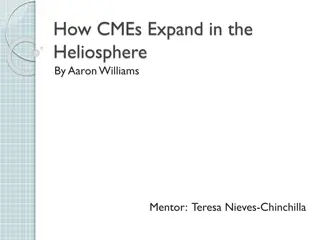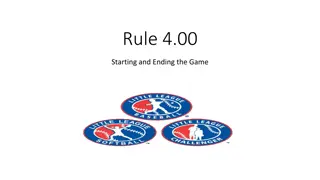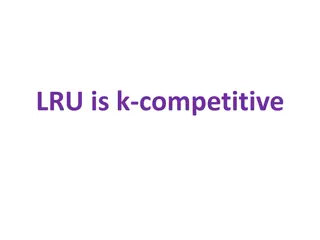Understanding Radio Wave Propagation and Solar Activity Effects
Explore how radio waves travel and are influenced by solar activity. Learn about HF radio wave propagation, critical layers, day-night cycle effects, sunspots, coronal mass ejections, solar wind, auroras, and more. Discover the impacts of solar flux, sunspot numbers, and solar flares on radio wave c
7 views • 45 slides
Lagrange Remote-Sensing Instrument Package Overview
The Lagrange Remote-Sensing Instrument Package comprises four instruments for monitoring solar activity, including the Photospheric Magnetic Field Imager (PMI) and Extreme-UltraViolet Imager (EUVI). Consortium members from six nations are involved in this initiative, aimed at enhancing space weather
0 views • 16 slides
Operations Update and Planning for STEREO Mission
Operations for the STEREO mission are adjusting telemetry to meet reduced rates, affecting data processing and efficiency of systems. Planning is underway for changes post-mission flip, with concerns on extended non-operations. Data products being updated, while science observations focus on coronal
0 views • 16 slides
ESCAPE OSSR Onboarding: CME Database Working Group Overview
The ESCAPE OSSR onboarding project focuses on studying Coronal Mass Ejections (CMEs) from the Sun by analyzing data from an ICME database. The team uses various sources to estimate CME sources, evaluate their characteristics, associate CME propagation with Solar Wind types, and more. The database co
0 views • 7 slides
Solar Radio Bursts: Research Topics for SKA and MWA
Research on solar radio bursts, particularly Type II and III bursts and Coronal Mass Ejections (CMEs), explores dynamic solar activity, fundamental physics, and their impact on space weather. Topics include density profiles, source regions, polarization, and weak radio emissions associated with CMEs
0 views • 19 slides
Understanding CMEs in the Heliosphere: Expansion Patterns and Evolution
This project explores the expansion and evolution of Coronal Mass Ejections (CMEs) in the heliosphere, focusing on radial propagation and self-similar expansion. Through remote sensing and in-situ observations, the study aims to reconcile discrepancies between different data sources and enhance our
0 views • 10 slides
Baseball Game Rules and Procedures
Learn the essential rules for starting and ending a baseball game, including umpire meetings, defensive positions, continuous batting order, base coaches, code of conduct for managers, coaches, and players, ejections protocol, and umpire conduct guidelines.
0 views • 13 slides
Understanding LRU Competitiveness Theorem
The Lemma states that if a page is ejected by the LRU algorithm after being touched in a request sequence, there is a fault in the offline algorithm. The Theorem extends this to show that for any segment where LRU incurs k faults, the offline algorithm also has a fault. The proof involves examining
0 views • 8 slides

